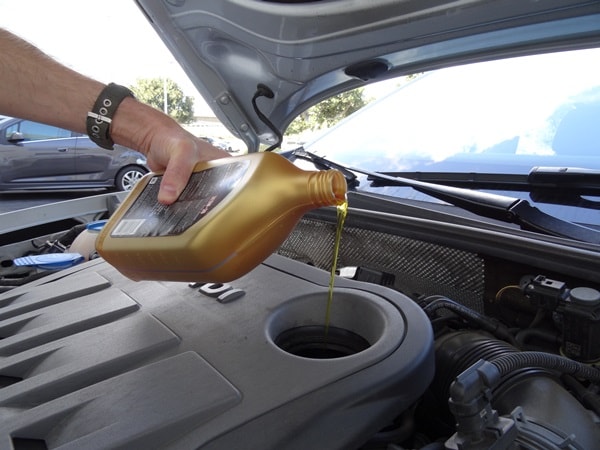
- New cars more dependable than ever
- Service intervals are longer
- How to avoid unnecessary maintenance
Although contemporary motor vehicles are more sophisticated than ever before, they’re also more reliable and generally simpler to maintain, requiring less professional upkeep than at any time in the past.
An average routine scheduled maintenance visit today entails replacing various filters, checking brake wear, tire rotation, and plugging into the OBD (On Board Diagnostic) port to see if the computer has recorded any error codes. The visit may or may not include a change of the engine oil and oil filter, which is perhaps the most basic of all automotive upkeep functions.
But it’s also presents the opportunity for one of the more common service shop abuses—unnecessary maintenance.
Longer oil change intervals
In the not-so-distant past 3,000 miles was considered the maximum an owner should go between oil changes. But in recent years those intervals have increased dramatically—5,000 miles is the minimum today, and 10,000 miles is becoming increasingly common.
What’s changed? For one thing, engine manufacturing has improved—tighter tolerances, better machining, more precise assembly. Fuel injection has improved as well, eliminating overly rich mixtures, and thus reducing oil contamination, particularly during warm-up.
Also, synthetic oils have been a game changer, and are now prescribed by some carmakers for many of their products—Toyota, for example. In contrast, Ford does not. Synthetics are more expensive than conventional oil, but they have much higher heat resistance and maintain lubricating properties longer.
More significant, manufacturers are equipping more and more cars with oil life monitors. Some are simple, merely tracking miles between changes. Others are more sophisticated, weighing a variety of factors—number of cold starts, average temperature, vehicle speed, engine loads, and other variables. Monitors that use a wide variety of operating parameters frequently carry oil life beyond the 10,000-mile mark.
Other issues affecting oil life
But there are other factors affecting oil life. For example, if your vehicle is designed to operate on more than one type of fuel, i.e., flex fuel, the oil change is recommended at 5,000 miles. And if the vehicle runs on E85 more than half the time, oil change intervals go down even more—as low as 2,500 miles. One footnote: most new cars are specific about oil viscosity (the thickness), e.g. 10W30, 15W50, etc. The specification can be found in the car’s owner’s manual.
The bottom line here: if your service provider is recommending an oil change at 3,000 miles, and you’re not burning E85 on a regular basis, it may be time to find another shop.
Tune-up or not to tune-up
Because of sophisticated electronic ignition, spark plugs with lifetimes that exceed 100,000 miles and on-board diagnostics catching problems early, the traditional tune-up for engine timing and plugs is a thing of the past. The same goes for lubrication of joints, bearings and other suspension bits. All these moving parts are sealed and lubed for life.
Now when a routine service is called for, it’s primarily inspect wear items, like brakes and wiper blades, and to check and replace air filters. Even coolant flushes or transmission oil change intervals are no longer an annual need. Engine coolant may be replaced every two or three years, while transmission oil can go even longer.
Beyond oil changes, most routine service intervals are six months or 5,000 miles, based on a 3-year/36,000-mile warranty, which is more or less the industry standard. Powertrain warranties commonly extend to 60,000 miles. Some carmakers offer longer warranties—Hyundai and Kia, for example offer a 5-year, 60,000-mile standard warranty and 10 years, 100,000 miles on powertrain. Volkswagen’s standard warranty is 6 years, 72,000 miles bumper to bumper and under the hood.
Another element of contemporary warranties is that with some the first routine maintenance visits are free, whereas others are not.
The Owner’s Bible
All the foregoing will be spelled out in your purchase or lease contract. And maintenance at the various regular service visits will be spelled out in that least read of all printed documents, your owner’s manual. It’s a cornucopia of useful information, some of which may save money.
If your service manager recommends something outside of the normal items listed in your owner’s manual—brake service at just 5,000 miles for example—unless you’ve been giving your car frequent exercise at track days, for example, it’s reasonable to be skeptical. Does this mean you should seek service elsewhere? Not necessarily. But it would not be unreasonable to seek a second opinion.
And keep in mind that going to an independent shop for routine service will not void your warranty.







